Social Video Can Deliver Viewers and Opportunities
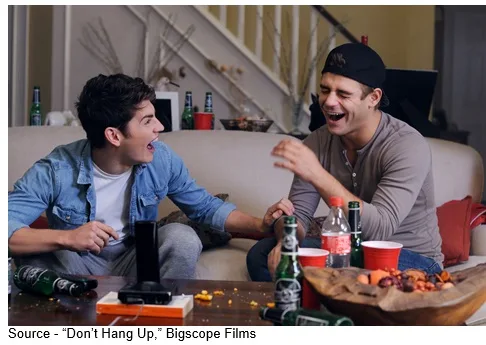
We all know it … admit it.
TV set viewing helped folks around the globe survive 2020 and well over half of 2021.
It did a great job of keeping us from rushing out into the street and the office to hug and talk with someone who wasn’t in your home bubble or a masked marauder in the grocery store.
True, it wasn’t really TV because technically, we had cut the TV bundle cord and started picking and choosing what/when we wanted to watch stuff.
We were happy to watch great movies/shows from the guy who started the streaming revolution … until we weren’t.
Then, we added the online retail guy and his service.
Then yeah, the mouse, the fruit (daughter) and the Hawaiian dance.
Still, the family was burning through good movies, shows and demanding more.
Next, we added two free services because secretly, we also missed ads. No not 20 minutes out of every hour … loud, long, boring, repeated.
While streaming ads are just poorly repurposed TV ads, it will take them time to figure out how to use our data to give us ads we’re interested in, but we’ll wait because the price of watching different shows isn’t that bad.
Four subscription and two ad-free VOD services should be enough for any family.
We were a little taken back lately when our daughter sat in her room watching YouTube stuff, TikTok and Snapchat whatever.
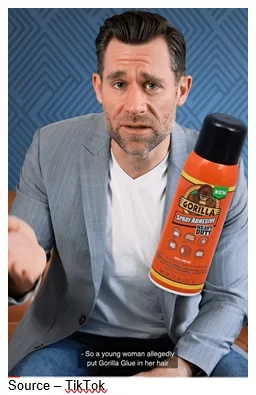
Half the time, they were thinly veiled ads – and she hates ads!
But obviously not enough because she’ll watch thinly veiled video ad shorts by amateurs – bad amateurs – on whatever screen she has around.
Actually, the free streaming social media video isn’t very new.
YouTube has been the go-to place for free online content for more than a dozen years.
In addition to user-generated content, companies have added volumes of how-to videos, filmed product announcements, movie/tv show trailers, darn near everything; and competition for the free-to-upload, free-to-watch, ad-supported model has attracted viewers, ad dollars and competitors.
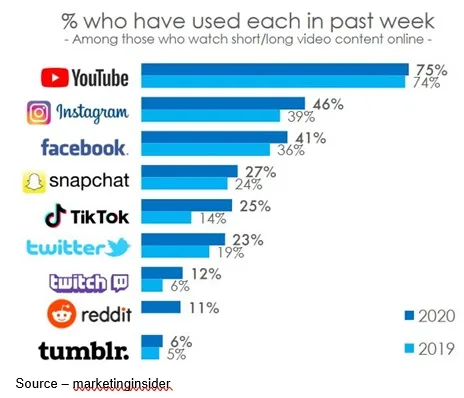
In an internet minute:
- 7M YouTube videos are viewed
- There are 1,400 TikTok downloads
- 694K TikTok videos viewed
- 47M YouTube minutes viewed
- Free-to-use/view video services attract more creations, advertisers, more viewers

Jeff Katzenberg saw the way forward when he formed Quibi. People liked watching video content on their mobile devices … and they liked short projects.
He came up short because people wanted tons of content, they wanted to share it and … they wanted it free.
That’s why every major platform has a big and constantly growing media/entertainment section.
They attract people who want their 15 minutes plus of fame that attracts millions of viewers which attracts tens of million advertising dollars.

And so, the cycle continues to go around as people and organizations around the globe create their content, folks get hooked into more of the stuff – especially if there are other segments/sequels – and social media video organizations and shareholders take their cut off the top.
YouTube’s worldwide advertising revenues were $6.89B U.S. in the fourth quarter of 2020, a 46 percent year-over-year increase.
If its current growth trajectory continues, YouTube will book between $29B and $30B this year. By comparison, Netflix is expected to report $29.7B in revenue for 2021.
In the long hours spent at home throughout 2020 and the early part of 2021, people – young and old – dramatically increased their use of streaming services.
It was especially apparent in the younger crowd where 33 percent of U.S. youth 4-14 viewed shows on Netflix, 8 percent tapped into Hulu shows and 28 percent viewed movies/shows on Disney+.
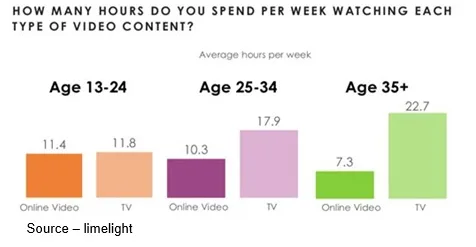
During a single month, analysis showed that youngster viewing in the U.S. increased significantly for both YouTube and TikTok, reaching 97 and 95 minutes respectively.
And the two short, free video entertainment services certainly aren’t alone.
The number of national and international social media video services have continued to grow in number and popularity.
While Gen Z social network time was 1:05, up from 56 minutes last year, digital video time was 2:13, up from 1:46 in the same period.
In 2020, adults spent 7 hours, 50 minutes per day consuming digital media, up 15 percent from 6:49 the prior year and the biggest increase since 2012. Digital time accounted for 57.5 percent of adults’ daily media time last year and that figure will reach 60.2 percent by 2022.
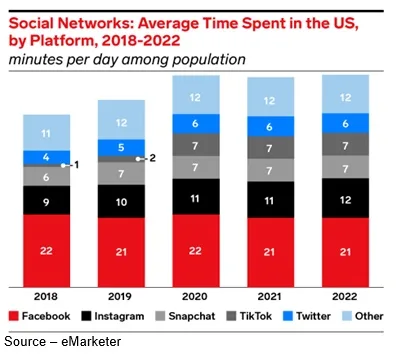
The importance of social media for business has dramatically increased, moving beyond the hype phase when business was there because it was cool.
Millennials and boomers are joining the Gen Z audience to take in their share of the short-form entertainment.
Now, we’ve entered the productive phase where it is becoming a true marketing advantage when it is initiated with a professional content creation/production team.
The digital era combined with the “stay home” period have not only impacted how we watch our favorite shows, but how we hear about them in the first place.
There are more platforms, more media channels, more partners, more formats, more shows and more viewing opportunities than ever before.
It’s more complex/difficult for VOD services and shows to capture and hold people’s interest and attention.
Prime-time television is quickly becoming a memory. Streaming services and social media have produced hundreds of thousands of general and niche channels.
Prime time is now personal with each connected individual around the globe having his/her prime time and none of them are the same.
More importantly, the personal prime time viewing depends on what is important to the viewer … not a Hollywood name.
Fortunately, the digital platform provides shows/movies the opportunity to gain a better understanding of the audiences as well as their entertainment interests/needs.
Studios like Disney, Lionsgate, MGM, Paramount, Sony, Warner and others invest millions in creating, refining, testing multiple project trailers to appeal to different segments of the social media audience.
Aggressive and creative use of social media has been a key marketing tool for Netflix to reach potential and present subscribers to get them involved and keep them connected to the service.
They were the first advertiser in 2017 to use Snapchat’s 3D world lenses format to get Gen Z audiences connected to the “Strange Things” series, creating a “gotta see it” buzz.
While Apple, Amazon, Disney, HBO, Netflix and others expand their subscription services globally; consumers are figuring out which services are essential and which are not.
The combination of TV and online video (OLV) generates unprecedented reach as well as access to light TV viewers.
In addition, people have expanded their viewing opportunities with long- and short-form social media video with their on-the-go devices.
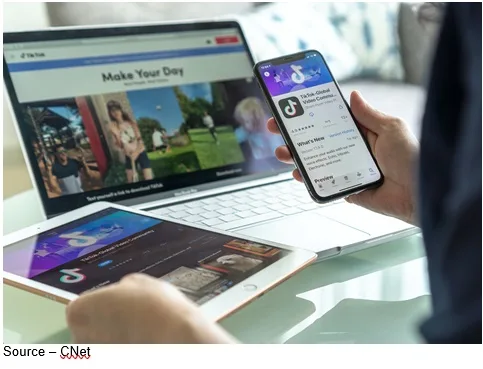
YouTube, TikTok, Instagram, Facebook and other social media outlets have opened up new distribution opportunities for indie filmmakers to promote and monetize their content direct to the consumer as well as to the global VOD services.
Social media distribution/viewing isn’t simply about shortened attention spans but rather how consumers are curating and managing/using their online time and attention.
The challenge for video content developers and distributors is to gain a strong understanding as to how short-form social media video can best be optimized to feed viewers to long-form VOD and social media content.
As things become more open, more relaxed, streaming entertainment will retain the gains it has made this past year and the challenge for streaming services and filmmakers will be to retain the eyeballs they have worked so hard to capture.
D2C content services and filmmakers just need to take a more aggressive and direct control over how projects are positioned and promoted to general and specific audiences.
 These are the early, formative days for social media video opportunities, which means you can’t do it wrong because there’s no right … yet.
These are the early, formative days for social media video opportunities, which means you can’t do it wrong because there’s no right … yet.
Or as Brady Mannion in “Don’t Hang Up” said, “That’s what Sunday nights and caffeine are for!”
# # #
Andy Marken – [email protected] – is an author of more than 700 articles on management, marketing, communications, industry trends in media & entertainment, consumer electronics, software and applications. An internationally recognized marketing/communications consultant with a broad range of technical and industry expertise especially in storage, storage management and film/video production fields; he has an extended range of relationships with business, industry trade press, online media and industry analysts/consultants.